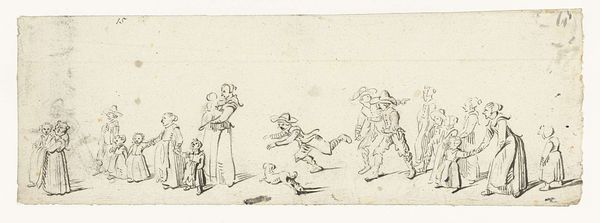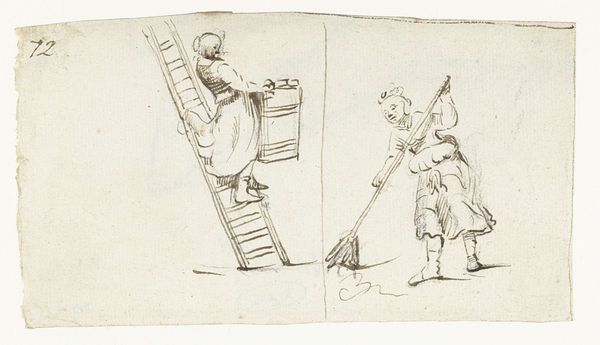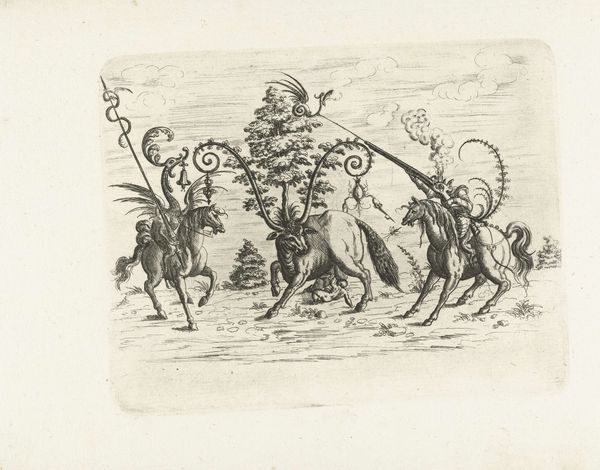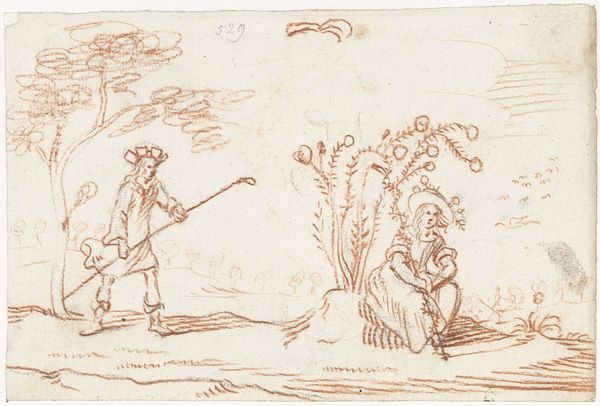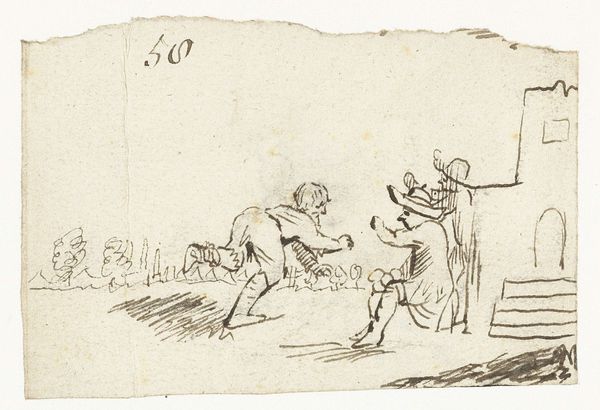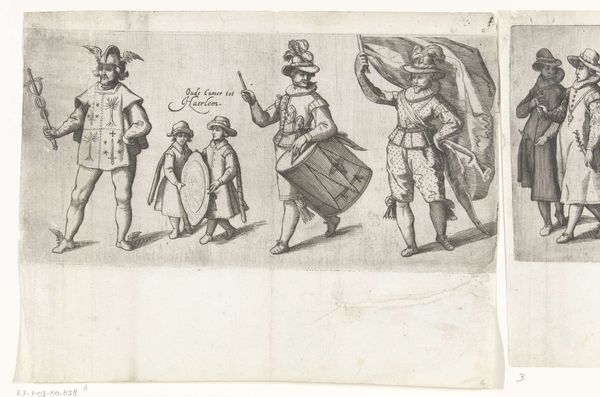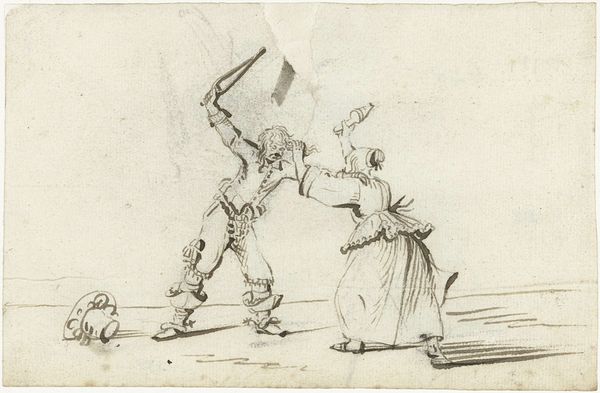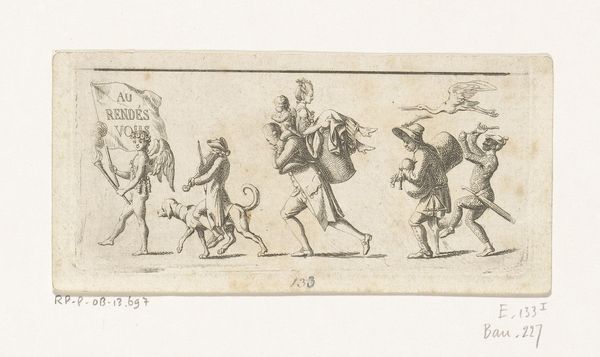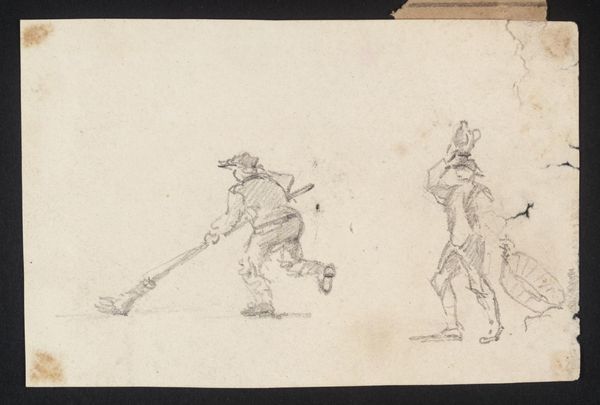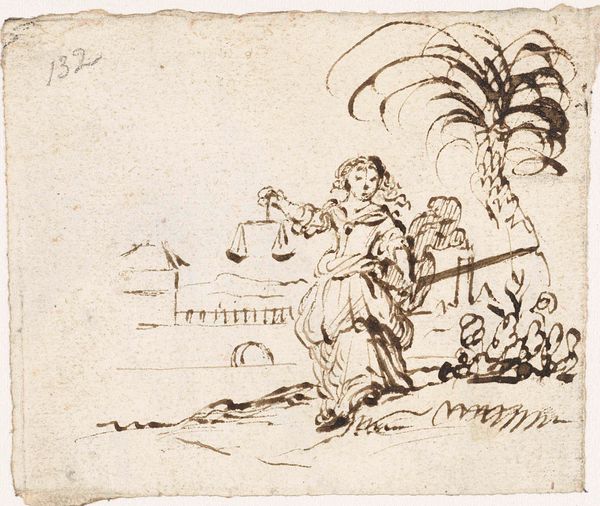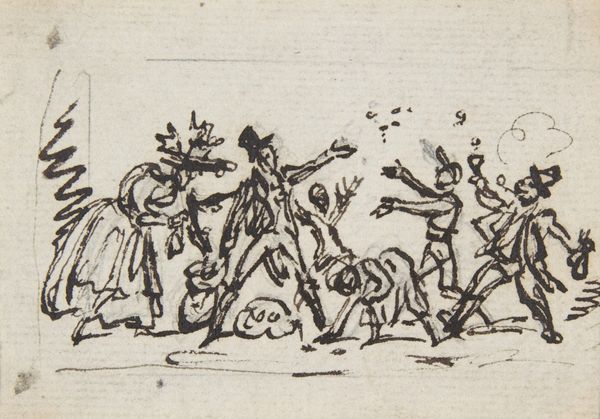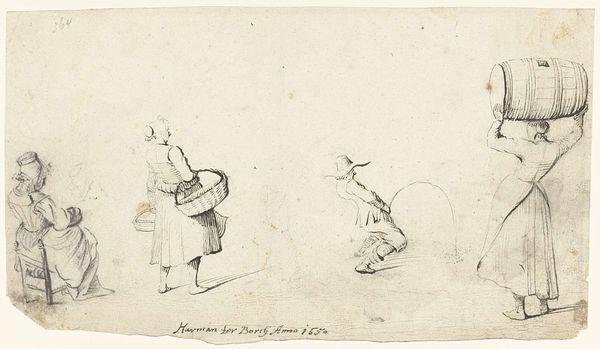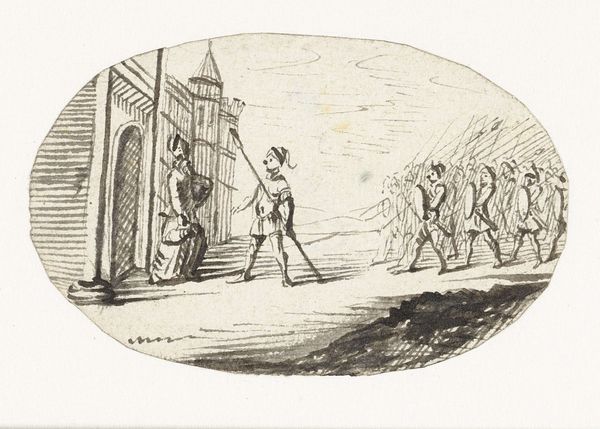
drawing, ink, pen
#
drawing
#
dutch-golden-age
#
ink
#
pen
#
genre-painting
Dimensions: height 67 mm, width 175 mm
Copyright: Rijks Museum: Open Domain
Curator: Let's talk about Moses ter Borch's "Street Scene with Working Men and Playing Boys," made around 1656. It's a drawing done in pen and ink, currently housed in the Rijksmuseum. Editor: It’s quite lively! There’s a real sense of everyday activity captured. What do you see in this piece? Curator: I see a direct engagement with the material realities of 17th-century Dutch life. The quick, almost frantic lines of the pen suggest a world driven by labor and commerce. Think about the accessibility of drawing as a medium versus painting. Who had access to what materials? The social standing can then be analyzed. Editor: That's an interesting point! So the choice of pen and ink itself is significant? Curator: Absolutely! It speaks to a certain level of... pragmatism. Ter Borch isn't just representing the world; he's documenting it with the materials at hand, reflecting maybe the efficiency demanded by the mercantile spirit of the age. Notice also how different types of labor are presented. Consider, too, what’s absent, who's not being represented here? Editor: Hmm, true. Are you saying the drawing itself, the materiality of it, is part of the story? It influences what the audience understands, not only just the subject in general but maybe deeper social and class themes? Curator: Precisely! The seemingly simple pen and ink drawing becomes a complex statement about the means of production and representation. Editor: I never thought about it that way, fascinating. Curator: By considering the materials and methods, we've gone deeper than just aesthetic appreciation; we've seen how art engages with, and is shaped by, the economic and social forces around it.
Comments
No comments
Be the first to comment and join the conversation on the ultimate creative platform.
